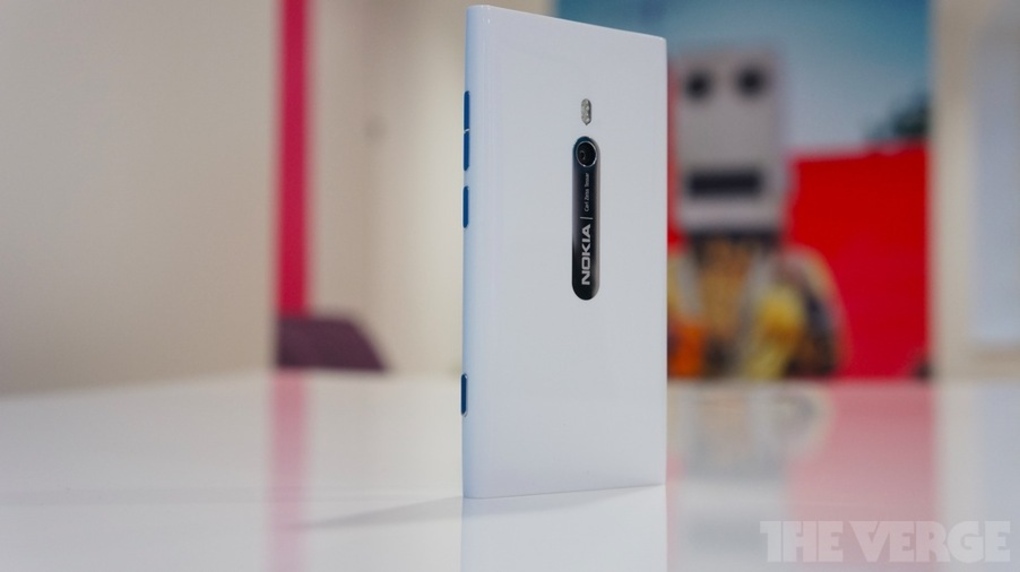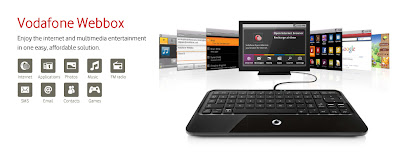A look back at iconic Nokia phones

Today, depending on your perspective, we either mourn the loss of one of the most important phone makers ever, or celebrate that the people behind so many iconic phones will continue to work under the Microsoft flag.
As Microsoft, Nokia, and any number of regulatory authorities get to work on finalizing the $7.3 billion deal that will see Microsoft buy Nokia's devices and services division, take a moment to look back at some of Nokia's most beautiful, important, and bizarre creations.
Hint: Use the 's' and 'd' keys to navigate
 Although it was by no means the first phone from Nokia — to go way back, you can take a look at the fantastic Nokia Museum — the 1011 was a very important handset. Released in 1992, It was Nokia's first to run on a GSM network, and so can be seen as the first "modern" phone from the company.
Although it was by no means the first phone from Nokia — to go way back, you can take a look at the fantastic Nokia Museum — the 1011 was a very important handset. Released in 1992, It was Nokia's first to run on a GSM network, and so can be seen as the first "modern" phone from the company. The Nokia 2110 was not only the company's first to feature the now-famous Nokia ringtone, but it was also the first phone Verge editor-in-chief Joshua Topolsky ever owned. On the right is the Nokia 6110, the first cellphone used by Verge editors Thomas Ricker and Laura June.
The Nokia 2110 was not only the company's first to feature the now-famous Nokia ringtone, but it was also the first phone Verge editor-in-chief Joshua Topolsky ever owned. On the right is the Nokia 6110, the first cellphone used by Verge editors Thomas Ricker and Laura June. Originally released in 1996, the Nokia 8110 (image credit: Unlock Unit) was a business-oriented device with a mechanical slider. Three years later, it featured heavily in the 1999 movie The Matrix, further driving Nokia's popularity at the time.
Originally released in 1996, the Nokia 8110 (image credit: Unlock Unit) was a business-oriented device with a mechanical slider. Three years later, it featured heavily in the 1999 movie The Matrix, further driving Nokia's popularity at the time. In 1996, Nokia unleashed the Communicator 9000 on an unsuspecting world. With a full QWERTY keyboard, a 24MHz processor, and a giant 4.5-inch display, the original Communicator was every businessperson's dream.
In 1996, Nokia unleashed the Communicator 9000 on an unsuspecting world. With a full QWERTY keyboard, a 24MHz processor, and a giant 4.5-inch display, the original Communicator was every businessperson's dream. 1999's 8210 represented a huge accomplishment for Nokia's engineers. The tiny handset had an internal aerial — an unusual feature in 1999 — and weighed just 79g. Despite its size, the 8210 still had advanced features like an infrared port for contract exchange and two-player 'Snake.'
1999's 8210 represented a huge accomplishment for Nokia's engineers. The tiny handset had an internal aerial — an unusual feature in 1999 — and weighed just 79g. Despite its size, the 8210 still had advanced features like an infrared port for contract exchange and two-player 'Snake.' The Nokia 3310, the sequel to the taller 3210, took the 8210's aesthetic and added some heft. The 3310 struck the perfect balance between desirability and affordability, and Nokia went on to sell over 125 million worldwide.
The Nokia 3310, the sequel to the taller 3210, took the 8210's aesthetic and added some heft. The 3310 struck the perfect balance between desirability and affordability, and Nokia went on to sell over 125 million worldwide. The 7650 was the first phone from Nokia to run Symbian, the OS all its smartphones would run for many years, and also the first to feature a camera.
The 7650 was the first phone from Nokia to run Symbian, the OS all its smartphones would run for many years, and also the first to feature a camera. The Nokia 6800 is one of many examples of Nokia throwing a curveball. A candybar handset that unfolded to reveal a full QWERTY keyboard, the "butterfly phone" and its successors were popular in their day.
The Nokia 6800 is one of many examples of Nokia throwing a curveball. A candybar handset that unfolded to reveal a full QWERTY keyboard, the "butterfly phone" and its successors were popular in their day. The short-lived N-Gage line was a serious attack on Nintendo's handheld gaming monopoly. The first N-Gage bizarrely had its microphone and earpiece mounted on the side of the device, leading to much "sidetalking." With the release of the N-Gage QD, pictured above, Nokia saw sense and mounted the earpiece on the device's front.
The short-lived N-Gage line was a serious attack on Nintendo's handheld gaming monopoly. The first N-Gage bizarrely had its microphone and earpiece mounted on the side of the device, leading to much "sidetalking." With the release of the N-Gage QD, pictured above, Nokia saw sense and mounted the earpiece on the device's front.- The 2003 Nokia 7600 doesn't represent a massive milestone for the company — although it was one of the first 3G phones from the company. Instead, it's an opportunity to take in one of the company's most outlandish designs.
 Released mid-2004, the 7610 baffled users' thumbs everywhere thanks to a distinctive keypad layout.
Released mid-2004, the 7610 baffled users' thumbs everywhere thanks to a distinctive keypad layout. Presenting the 7280. Say what you will about Nokia, but it's never been afraid to experiment. Announced in 2004 and affectionately known as "the lipstick phone," this Symbian handset had no number pad, no touch screen (it was 2004), and very few sales.
Presenting the 7280. Say what you will about Nokia, but it's never been afraid to experiment. Announced in 2004 and affectionately known as "the lipstick phone," this Symbian handset had no number pad, no touch screen (it was 2004), and very few sales. The 7710 was Nokia's first attempt at a touch screen device. In 2004, the strange shape and lack of a keypad confused many, and the device failed to gain traction.
The 7710 was Nokia's first attempt at a touch screen device. In 2004, the strange shape and lack of a keypad confused many, and the device failed to gain traction. The 9300, released 2005. This was Nokia's attempt to bring its business-oriented line of Communicator smartphones to the mass market. It retains the Communicator series' signature design, but was never marketed as a Communicator.
The 9300, released 2005. This was Nokia's attempt to bring its business-oriented line of Communicator smartphones to the mass market. It retains the Communicator series' signature design, but was never marketed as a Communicator. Released in 2005, the Nokia 770 Internet Tablet was the company's first device to run on Maemo (later renamed MeeGo), the operating system that was supposed to be the future of the company.
Released in 2005, the Nokia 770 Internet Tablet was the company's first device to run on Maemo (later renamed MeeGo), the operating system that was supposed to be the future of the company. The Nokia N93. Released July 2006, it's one of Nokia's many experimental form factors. With a Carl Zeiss lens, the N93 was marketed as an all-in-one smartphone and camcorder.
The Nokia N93. Released July 2006, it's one of Nokia's many experimental form factors. With a Carl Zeiss lens, the N93 was marketed as an all-in-one smartphone and camcorder. The Nokia N95. Perhaps the original "iPhone killer," this Symbian handset was Nokia's big release for 2007.
The Nokia N95. Perhaps the original "iPhone killer," this Symbian handset was Nokia's big release for 2007. In 2009, the N97 was Nokia's halo device. A big screen like the iPhone, a quality keyboard, what could go wrong? Lots.
In 2009, the N97 was Nokia's halo device. A big screen like the iPhone, a quality keyboard, what could go wrong? Lots. If the N95 and N97 were the answers to the iPhone, the E71 was unmistakably an attempt to defeat BlackBerry. Praised for its high build quality, the E71 was let down by the then-aging Symbian OS.
If the N95 and N97 were the answers to the iPhone, the E71 was unmistakably an attempt to defeat BlackBerry. Praised for its high build quality, the E71 was let down by the then-aging Symbian OS. The Nokia X7 (the X stands for "Xpress") was the first X-Series handset to run Nokia's Symbian^3 operating system. Symbian^3, later renamed "Anna" and then "Belle," was the last iteration of Nokia's Symbian.
The Nokia X7 (the X stands for "Xpress") was the first X-Series handset to run Nokia's Symbian^3 operating system. Symbian^3, later renamed "Anna" and then "Belle," was the last iteration of Nokia's Symbian. Look familiar? The Nokia N9 was the company's brave new hope in the fight against Android and iOS. It introduced the now-familiar Nokia Lumia polycarbonate shell, but rather than Windows Phone, ran the MeeGo Harmattan OS. Released in 2011, it was the last major release before Nokia made the jump to Windows phone.
Look familiar? The Nokia N9 was the company's brave new hope in the fight against Android and iOS. It introduced the now-familiar Nokia Lumia polycarbonate shell, but rather than Windows Phone, ran the MeeGo Harmattan OS. Released in 2011, it was the last major release before Nokia made the jump to Windows phone. The 808 PureView is a phone of milestones. The last Symbian phone, the first PureView phone, and still the owner of the record for "largest sensor in a phone."
The 808 PureView is a phone of milestones. The last Symbian phone, the first PureView phone, and still the owner of the record for "largest sensor in a phone." And so we enter the age of the Lumia. After the leak of the infamous "burning platform" memo, Stephen Elop moved Nokia over to Windows Phone, and the Lumia 800, essentially a reworked N9, was released in November 2011.
And so we enter the age of the Lumia. After the leak of the infamous "burning platform" memo, Stephen Elop moved Nokia over to Windows Phone, and the Lumia 800, essentially a reworked N9, was released in November 2011.
Via: The Verge


